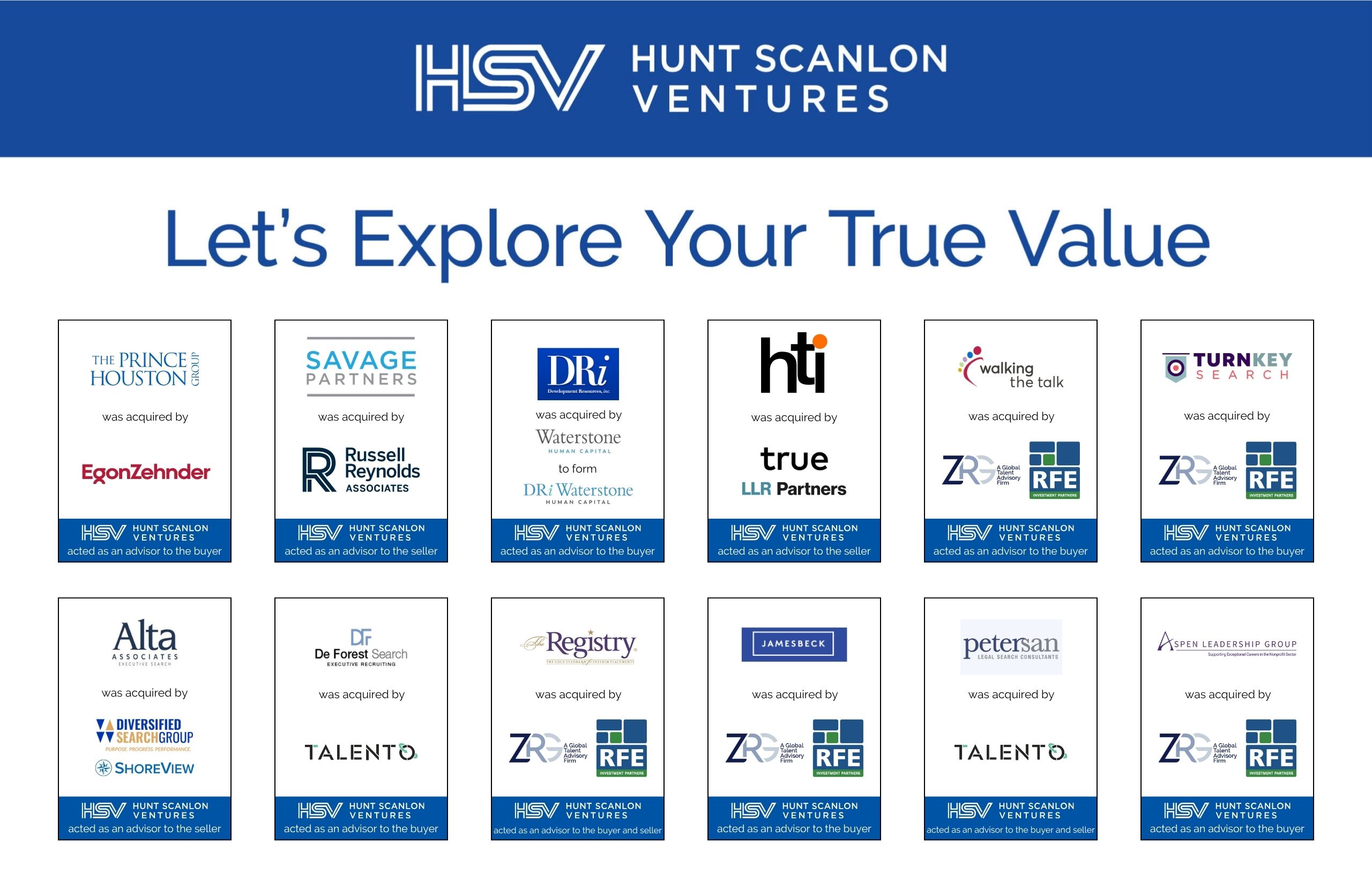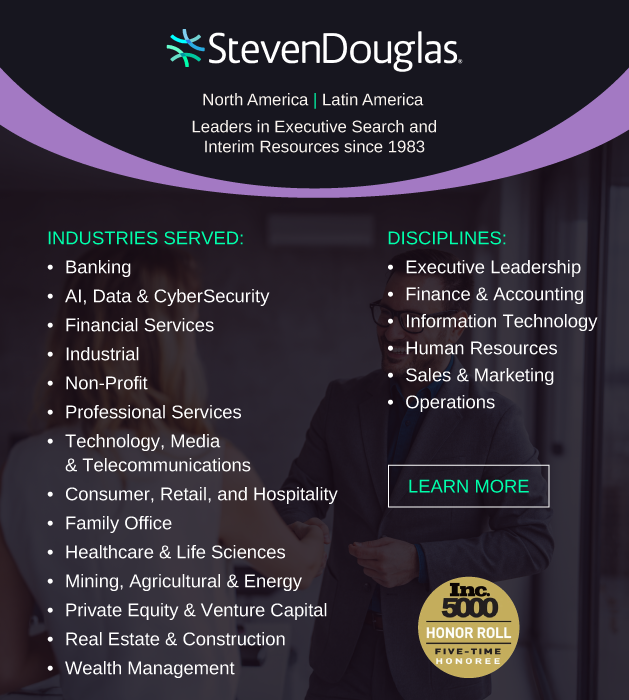Mergers and acquisitions are widely used for business growth, but many fail due to overlooked human capital issues. While financial and operational risks are carefully examined, talent strategy is often an afterthought. Evan Berta, an Associate at Hunt Scanlon Ventures, explores why prioritizing talent in M&A can be the key to long-term success.
Why do 70 percent of all mergers and acquisitions fail? Is it because our due diligence fails to adequately address the all-important issue of human talent? Sumeet Salwan, co-founder of CEO.works, argues that the success of any merger hinges on connecting the right talent to future value hotspots.
The global M&A market appeared to hit its stride closing out 2024 with a slew of megadeals, including a $35 billion merger between Capital One and Discover Financial.
Yet, even as M&A heats up around the globe, investors must know that they are taking a huge gamble. Study after study shows that most of these deals will fail, with a report by McKinsey & Company revealing that more than 70 percent of acquired companies fail to live up to their investment thesis, the value they’re expected to deliver post-deal. So, what’s going on?
In a recent IMD report, Sumeet Salwan offers insight into why so many M&A deals fail to achieve their intended value. The report highlights that financial models and market projections alone are insufficient to ensure post-deal success.
Instead, organizations must focus on talent, ensuring that the right leaders are positioned in roles that can unlock the company’s full potential. Mr. Salwan argues that successful mergers and acquisitions require companies to identify and connect talent to areas where value is currently untapped or underleveraged, which is what he refers to as “value hotspots.”
Talent Diligence Gap
“Pre-acquisition, brokers and dealmakers bend over backwards in their efforts to assess a prospective organization’s legal, financial, and commercial health,” said Mr. Salwan. “Market share, sales, growth projections, and regulatory compliance are all meticulously scrutinized. But one factor, one success criterion, determines any firm’s future performance and its ability to truly transform, shift, and adopt new directions: talent.”
For organizations executing an M&A strategy, ensuring leadership alignment is just as critical as financial due diligence. Without the right individuals in place post-deal, companies struggle to capitalize on the full potential of their acquisitions.
Unfortunately, many traditional due diligence processes focus heavily on financial metrics while neglecting human capital assessments.
“Market share, sales, growth projections, and regulatory compliance are all meticulously scrutinized. But one factor, one success criterion, determines any firm’s future performance and its ability to truly transform, shift, and adopt new directions: talent.”
Leveraging Value Hotspots
For M&A deals to reach their full potential, firms must prioritize leadership assessment. “Now, to leverage your value hotspots, you need the right talent in situ,” Mr. Salwan said. “You need leaders and decision-makers with the right capabilities, mindset, energy, and engagement, in the right parts of the organization, to transform potential into real value creation.”
Executive search and leadership consulting firms have long emphasized that leadership alignment with business strategy is critical. Yet, many M&A deals continue to overlook this principle. By integrating talent diligence into the due diligence process, firms can position themselves for long-term transformation and success.
“You need leaders and decision-makers with the right capabilities, mindset, energy, and engagement, in the right parts of the organization, to transform potential into real value creation.”
How Talent Impacts M&A in the Human Capital Industry
The human capital industry itself is undergoing a surge in M&A activity, as firms consolidate to expand their service offerings and increase market share. Executive search firms, leadership advisory firms, and HR tech companies are actively engaging in M&A, reinforcing the importance of talent within their own industry.
When executive search firms merge, the challenge isn’t just in integrating services, it’s in blending cultures and retaining key talent. Failing to do so can result in losing top recruiters, disrupting client relationships, and diminishing brand equity. This trend mirrors the broader M&A landscape, where talent misalignment often leads to post-deal underperformance.
Recent transactions brokered by Hunt Scanlon Ventures underscore this dynamic. ZRG’s acquisition of Aspen Leadership Group expanded its nonprofit and fundraising search capabilities. “But the long term success of the deal will hinge on integrating teams and client relationships,” said Evan Berta, an Associate with the Greenwich-based human capital M&A advisor. “Similarly, TalentoHC’s acquisition of The PeterSan Group – which we facilitated – enhances Talento’s legal recruiting expertise and human capital services, creating a new growth lane. But, the success of the deal will depend on aligning recruiting teams and retaining valued clients,” said Mr. Berta.
Improving M&A Outcomes
To improve M&A outcomes, organizations must integrate talent diligence into the deal-making process from the start. Instead of assuming leadership teams will transition smoothly post-merger, firms must evaluate whether they possess the right skills and adaptability to drive transformation.
“A people-centric approach to M&A ensures organizations not only achieve financial objectives but also build a foundation for sustained growth.”
“Your goal is not to unsettle people, put them on the spot, and jeopardize the positive energy you all need to get this deal across the finish line,” Mr. Salwan explained. “Rather, it’s about testing alignment and ensuring the right talent is in place to drive value.”
Beyond leadership, middle management and specialized teams play a critical role in executing business strategies. Ensuring these individuals are positioned in key roles is essential to avoiding disruption and accelerating post-deal success. “You need to know whether the organization as it stands is talented enough to deliver the value in your thesis,” Mr. Salwan emphasized. “And this isn’t easy.”
By embedding structured talent evaluations, clear succession planning, and proactive workforce integration strategies into every stage of the M&A process, organizations can mitigate risks and enhance long-term success. A people-centric approach to M&A ensures organizations not only achieve financial objectives but also build a foundation for sustained growth.
Article By

Evan Berta
Evan Berta is an Associate at Hunt Scanlon Ventures, specializing in data analysis, market mapping, and target list preparation. He plays a critical role in identifying and building out groups of firms in sectors of interest, including preparing strategic overviews of top potential targets for acquisitions. Evan’s analytical expertise supports the firm’s sourcing initiatives, particularly in identifying niche and emerging market opportunities, and delivering actionable insights on tight timelines.






